Gardening is a vibrant symphony of colors and textures, a delightful canvas that both beginners and seasoned green thumbs can endlessly explore. Whether you’re just getting your hands dirty for the first time or you’ve been nurturing your garden for years, “12 Colorful Water-Saving Garden Ideas” offers you a treasure trove of inspiration to create a stunning, sustainable landscape. This guide is more than just a collection of ideas; it’s a gateway to crafting a garden that flourishes with beauty while being mindful of our planet’s precious resources.
In today’s world, where water conservation is as crucial as ever, this guide empowers you to cultivate a garden that’s both breathtaking and responsible. You’ll discover practical tips and techniques that not only save water but also enhance your garden’s resilience and vibrancy. Dive in with confidence, knowing that each idea is designed to bring out the joy and fulfillment that comes from seeing your garden thrive with minimal water usage. Get ready to transform your space into a colorful oasis, where every bloom and leaf sings a song of sustainability and success.
Plant Drought-Tolerant Flowers
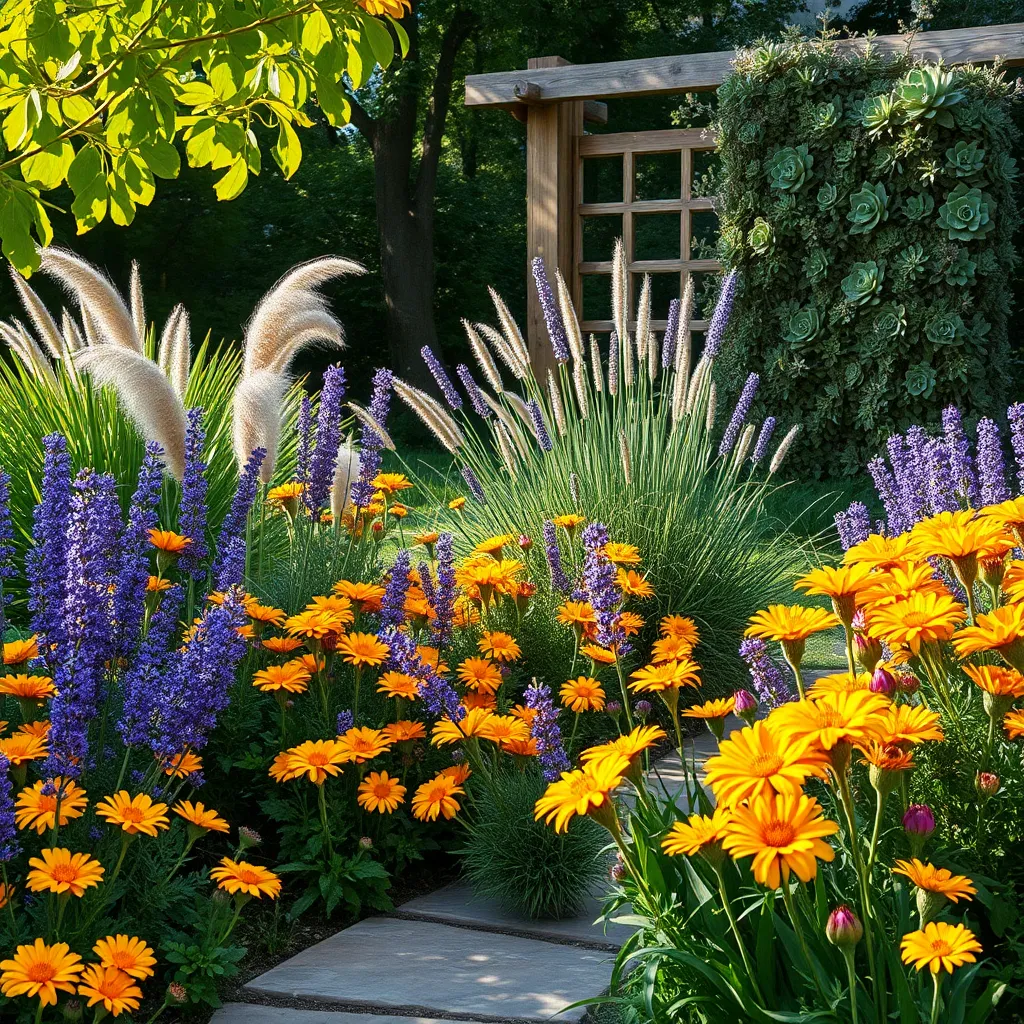
Choosing drought-tolerant flowers is a smart way to maintain a colorful garden even in dry conditions. These resilient plants are adapted to thrive with minimal water, making them ideal for water-saving gardens.
Consider planting Lavender, as it is not only drought-resistant but also adds a splash of purple blooms and a pleasant aroma. It thrives in well-drained soil and full sun, requiring watering only when the soil is completely dry.
Another excellent choice is the Blanket Flower (Gaillardia), which blooms in vibrant reds and oranges. It thrives in poor, sandy soils with good drainage and needs little more than occasional watering during prolonged dry spells.
For those looking to experiment further, try planting Russian Sage, which is both drought-tolerant and deer-resistant. This plant prefers sandy or rocky soil and full sun, and it rewards with long-lasting blue blooms that require minimal maintenance.
Incorporate Colorful Mulch Options
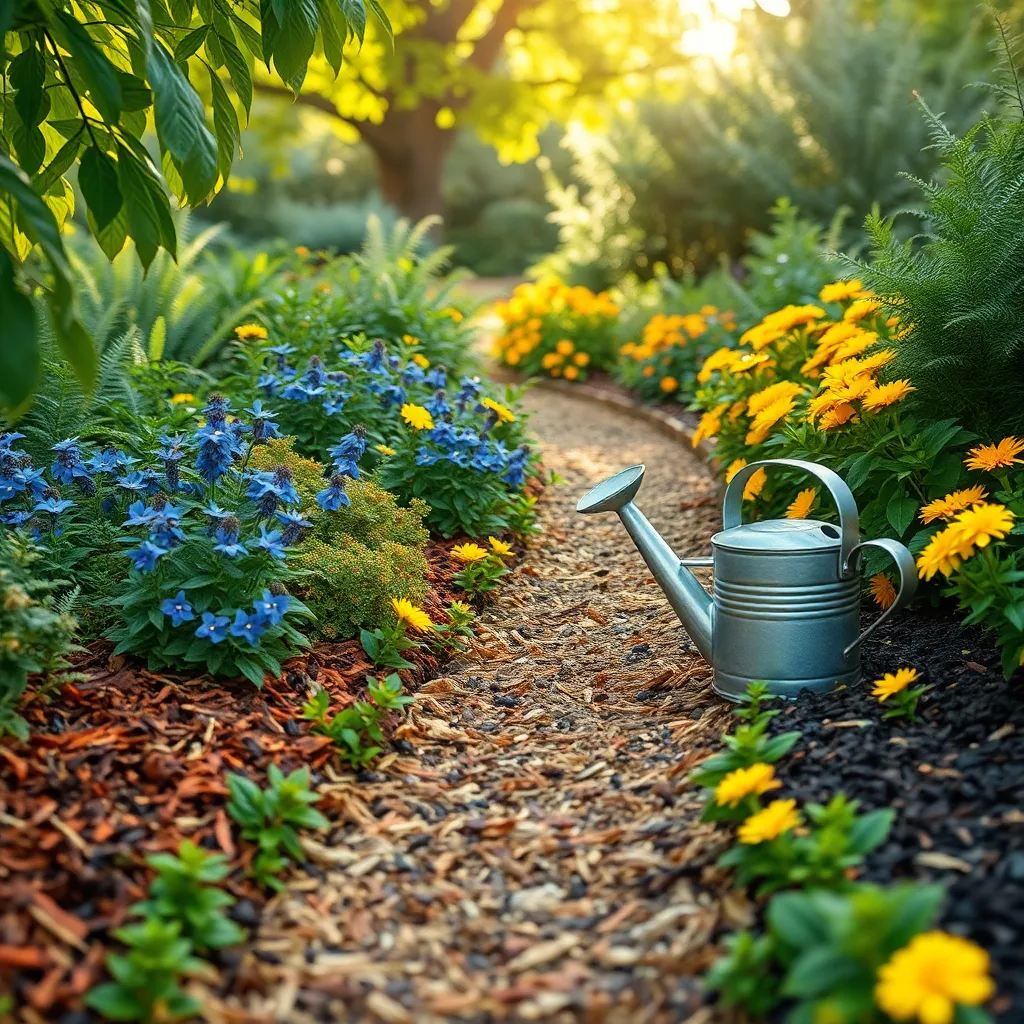
Adding colorful mulch to your garden is an excellent way to enhance its aesthetic appeal while conserving water. Organic options like dyed wood chips or bark can provide vibrant hues that complement your plant palette and help retain soil moisture.
When selecting mulch, it’s important to choose a color that matches or contrasts with your existing foliage for maximum impact. Additionally, consider the mulch’s ability to suppress weeds, as reducing weed growth can significantly decrease water competition among your plants.
Beginners might start with easy-to-find options like red or black dyed mulches, which are readily available at garden centers. For those with a bit more experience, experimenting with materials like cocoa hulls or pine bark can offer unique textures and shades.
Beyond aesthetics, the right mulch can improve soil health by slowly decomposing and adding nutrients back into the earth. Apply a 2-3 inch layer around your plants, ensuring to leave space around the stems to prevent rot and disease.
Use Rain Barrels for Watering
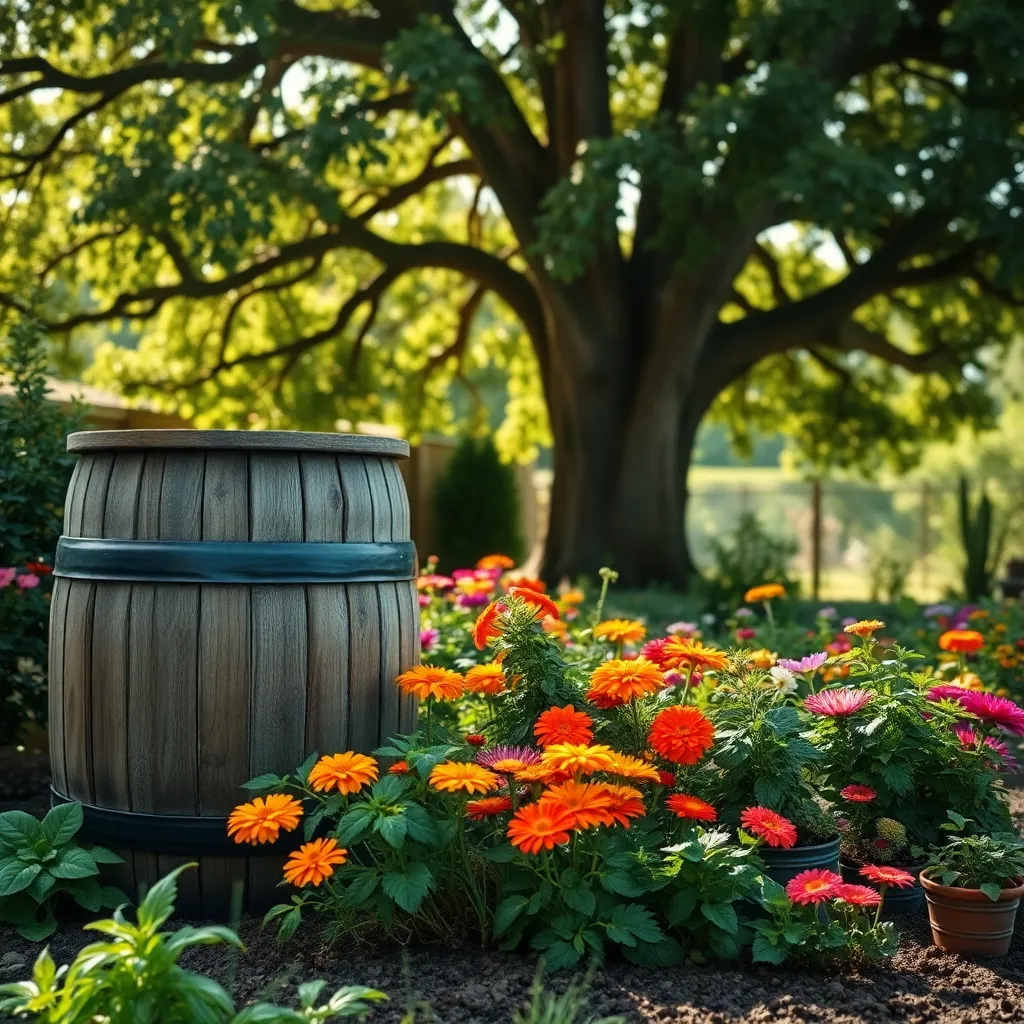
Rain barrels are a fantastic way to conserve water and keep your garden lush and vibrant. By collecting rainwater, you can provide your plants with a natural source of hydration that is free of chemicals often found in tap water.
Setting up a rain barrel is straightforward and can be done with minimal tools. Position the barrel under a downspout to capture runoff, and make sure it is securely placed on a level surface to prevent tipping.
Regular maintenance is essential to keep your rain barrel functioning effectively. Clean the barrel and gutters periodically to prevent debris buildup, which can clog the system and reduce water quality.
For a more advanced setup, consider linking multiple barrels to increase your water storage capacity. This technique is especially useful in areas with sporadic rainfall, allowing you to maximize your water collection for dry periods.
Select Vibrant Native Species
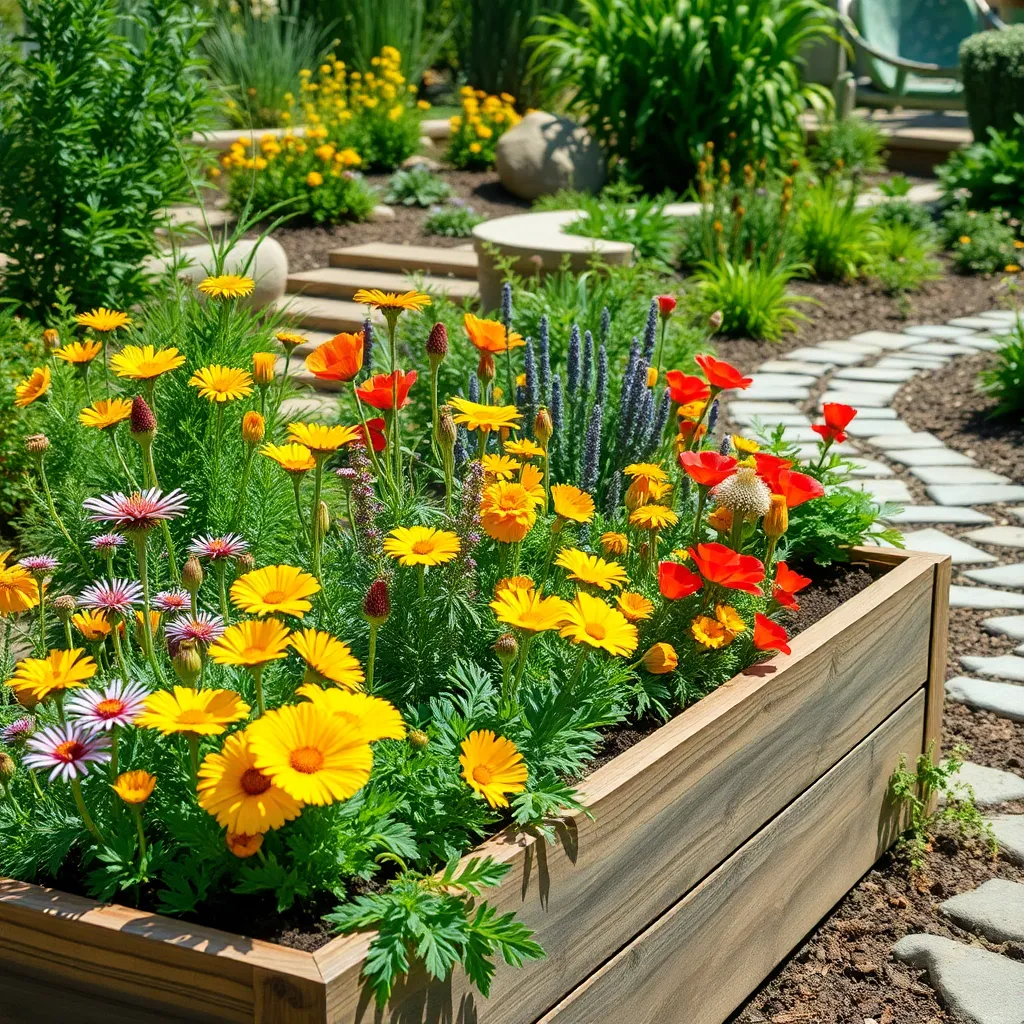
Choosing vibrant native species for your garden is a brilliant way to save water while adding color. Native plants are naturally adapted to local climates, often requiring less maintenance and irrigation.
To start, research plants that are native to your specific region, as these will thrive with minimal intervention. Look for species that offer a variety of colors and blooming seasons to keep your garden lively throughout the year.
Consider incorporating plants like echinacea, which boasts bright, daisy-like flowers and attracts pollinators. Echinacea thrives in well-drained soil and should be watered sparingly once established, making it a water-efficient choice.
For a stunning display, plant California poppies if they are native to your area. These vibrant orange blooms prefer sandy soil and full sun, and they require little water once mature, making them perfect for a water-wise garden.
Group Plants by Water Needs
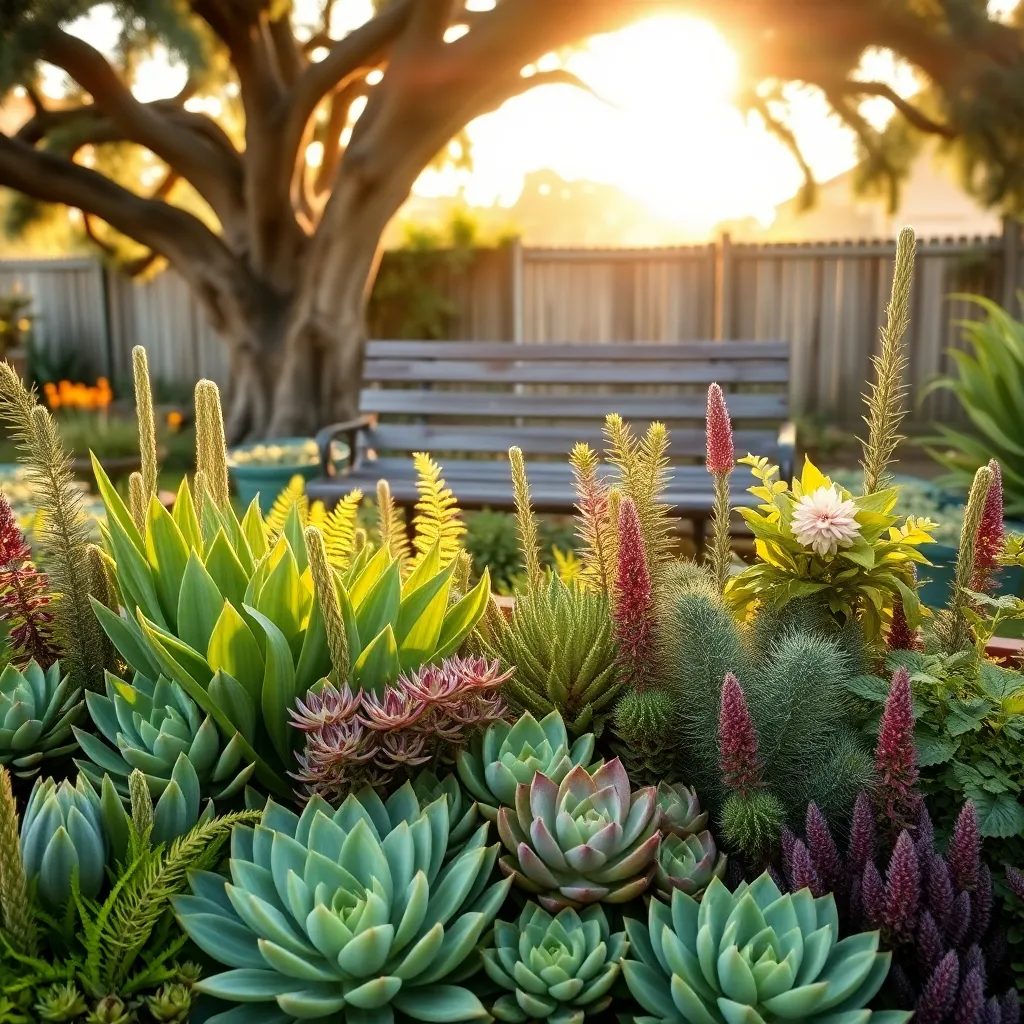
Grouping plants by their water needs is a smart way to conserve water and ensure your garden thrives. Begin by identifying plants that require similar moisture levels and place them together to optimize watering efficiency. This method helps prevent over-watering or under-watering, which can stress plants and reduce their vigor. For instance, succulents and cacti thrive with minimal water and should be grouped in well-draining soil.
To create a successful water-saving garden, consider using drip irrigation systems. These systems deliver water directly to the root zone, minimizing waste and ensuring plants receive the right amount of moisture. Additionally, applying a layer of mulch around your plant groupings can retain soil moisture and reduce evaporation. Use organic mulches, such as shredded bark or straw, to improve soil quality as they decompose.
For beginners, start with a simple group of drought-tolerant plants like lavender, sage, and yarrow. These plants not only require less water but also add vibrant color to your garden. More experienced gardeners might explore xeriscaping, which involves designing landscapes to reduce or eliminate the need for supplemental water. It’s a sustainable choice that can be both beautiful and practical.
Regularly assess the water needs of your plant groups, especially during seasonal changes. In hotter months, you may need to increase watering frequency slightly, while cooler months could require less. Remember to check the soil moisture by inserting your finger into the soil; if it’s dry an inch below the surface, it’s time to water. By monitoring your plants closely, you can tailor your watering schedule to meet their specific needs, ensuring a thriving, colorful garden year-round.
Add Colorful Gravel Paths
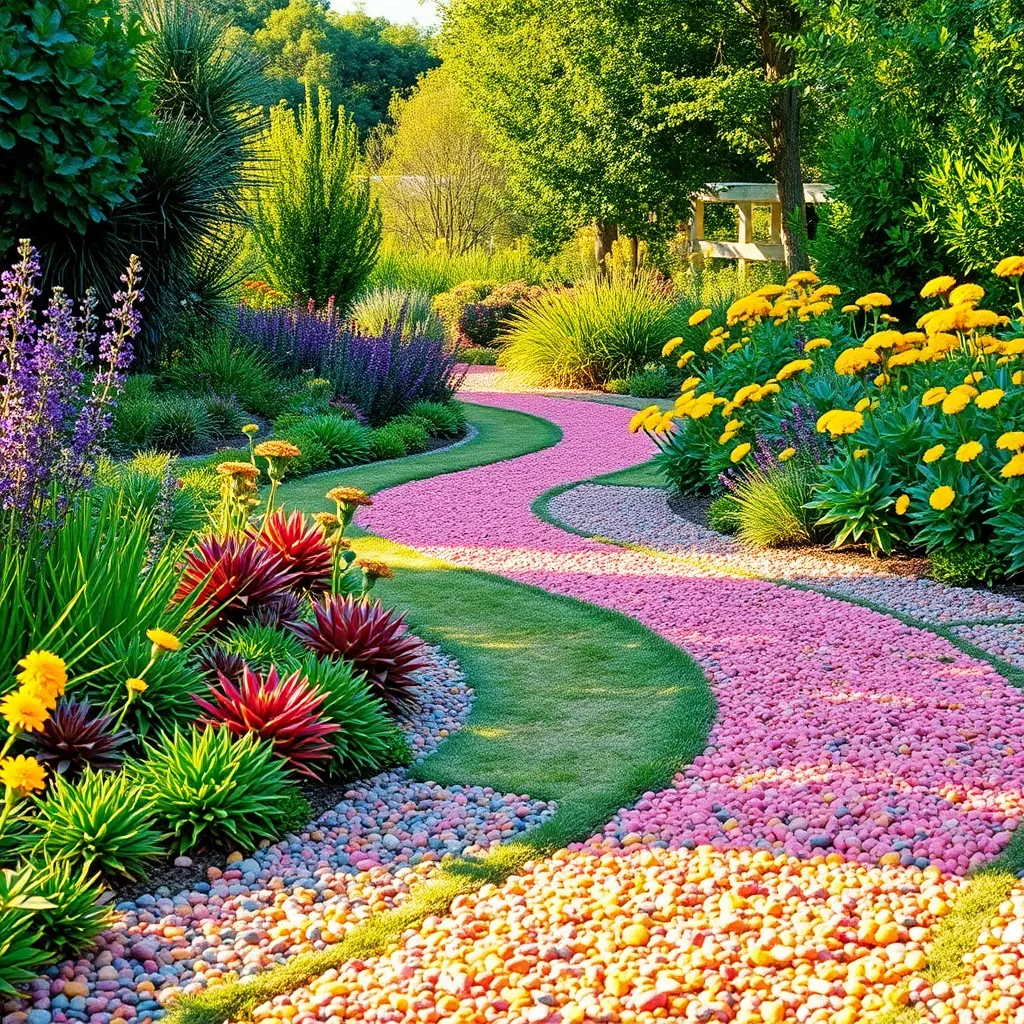
Adding colorful gravel paths can significantly enhance the beauty and functionality of your garden. These paths not only provide a stunning visual contrast but also help reduce water usage by minimizing the need for expansive lawns.
To create a gravel path, start by selecting a vibrant color that complements your garden’s existing palette. Choose gravel shades like terra cotta, deep blue, or natural stone hues to create a striking path that draws attention.
Install the path by first removing any existing vegetation and leveling the ground. Cover the area with a landscape fabric to prevent weeds, then layer about 2-3 inches of gravel on top, compacting it firmly for stability.
For a more polished look, consider edging the path with materials like bricks or stones. This not only defines the path but also keeps the gravel contained, reducing maintenance needs.
Advanced gardeners can experiment with patterns or mixing different gravel colors for a unique effect. Use a mix of larger stones and fine gravel to create a textured path that stands out while being water-efficient.
Choose Brightly Hued Succulents
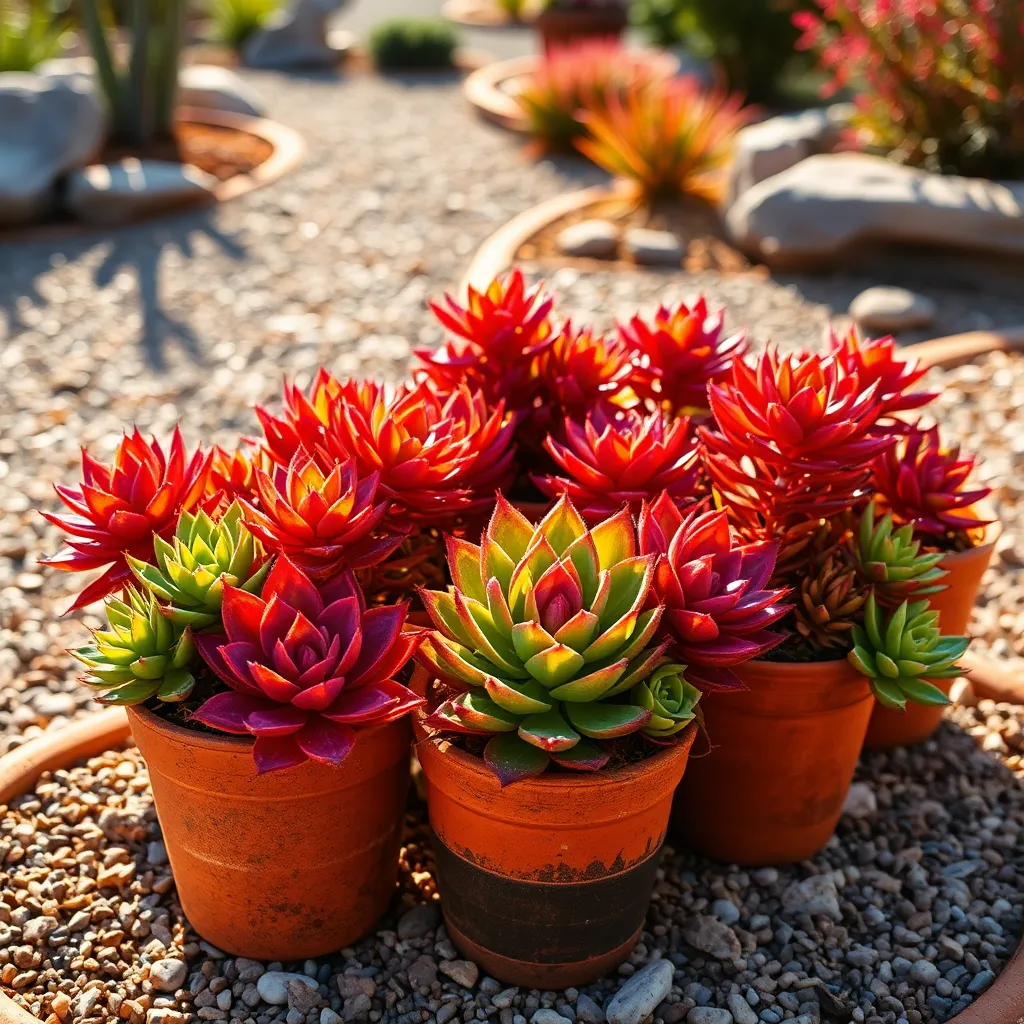
Brightly hued succulents add a splash of color to any water-saving garden, making them an excellent choice for both beginners and experienced gardeners. These resilient plants come in a variety of colors, including vibrant reds, purples, and blues, which can add striking contrast to the greens and browns typically found in xeriscapes.
When selecting succulents, consider incorporating varieties like Echeveria, Crassula, and Kalanchoe, known for their colorful foliage. These plants thrive in well-draining soil, such as a cactus mix or a blend of potting soil with sand or perlite added to enhance drainage.
To maintain their vibrant colors, succulents require plenty of sunlight, ideally about six hours a day. Position them in a spot that receives morning sun and afternoon shade to prevent leaf burn, especially in hotter climates.
Water your succulents deeply but infrequently, allowing the soil to dry out completely between waterings. Overwatering is a common mistake, so check the soil moisture with your finger or a moisture meter before deciding to water again.
For advanced gardeners, try grouping succulents with similar light and water needs together to create a cohesive and thriving display. Additionally, consider using a top dressing of colorful gravel or pebbles around your succulents to enhance their appearance and help retain soil moisture.
Install Drip Irrigation Systems
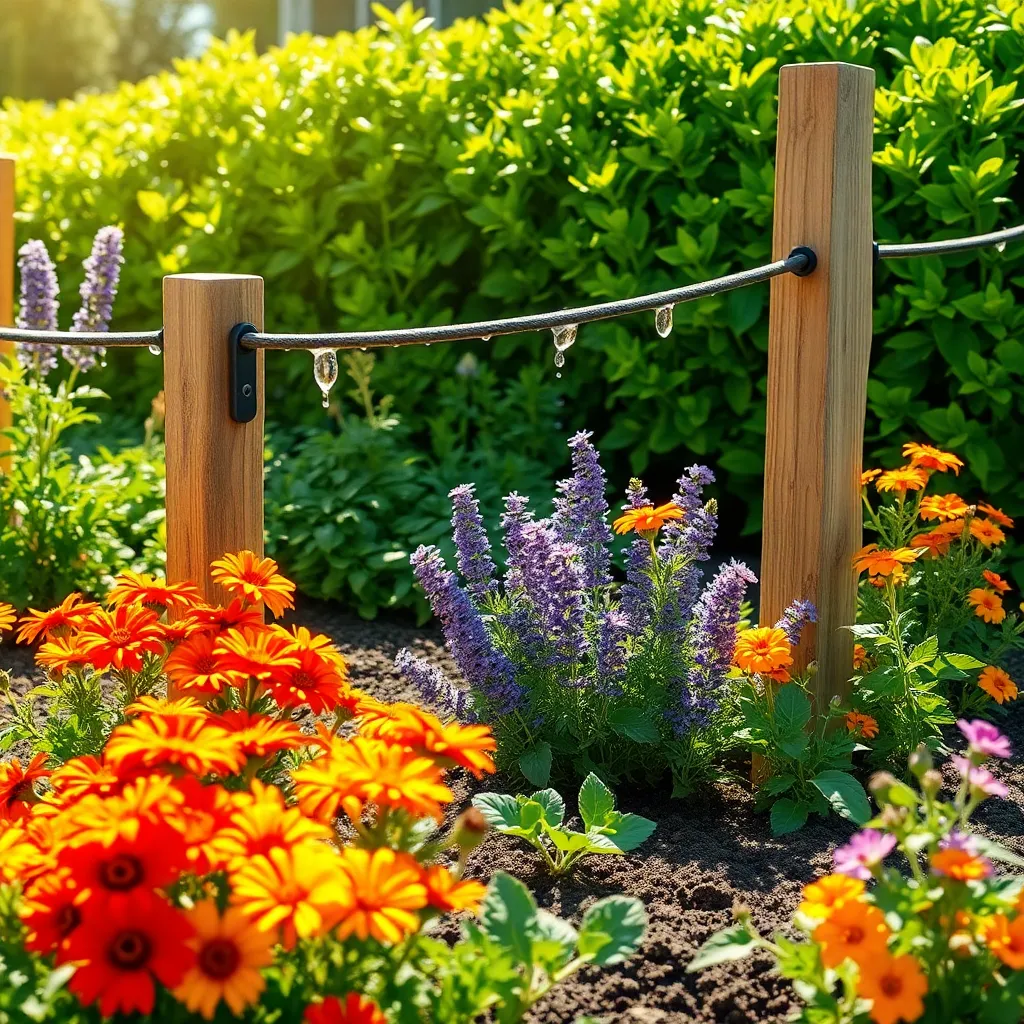
Drip irrigation systems are an excellent way to ensure your garden receives consistent moisture while conserving water. These systems deliver water directly to the plant’s root zone, minimizing evaporation and runoff, making them ideal for water-saving gardens.
Begin by assessing the layout of your garden and identifying which plants will benefit most from drip irrigation. Group plants with similar watering needs together to optimize the efficiency of your system and ensure each plant type receives the appropriate amount of moisture.
Installation can be straightforward with a bit of planning. Use flexible tubing to maneuver around your garden beds, and install emitters or drippers at the base of each plant. This targeted approach helps maintain soil moisture levels without over-saturating areas, promoting healthier root systems.
For those new to drip irrigation, start with a basic kit which includes all necessary components like tubing, connectors, and emitters. Once comfortable, you can upgrade your system with timers and moisture sensors, allowing for more precise control over water usage and further conservation efforts.
Create Shaded Plant Zones
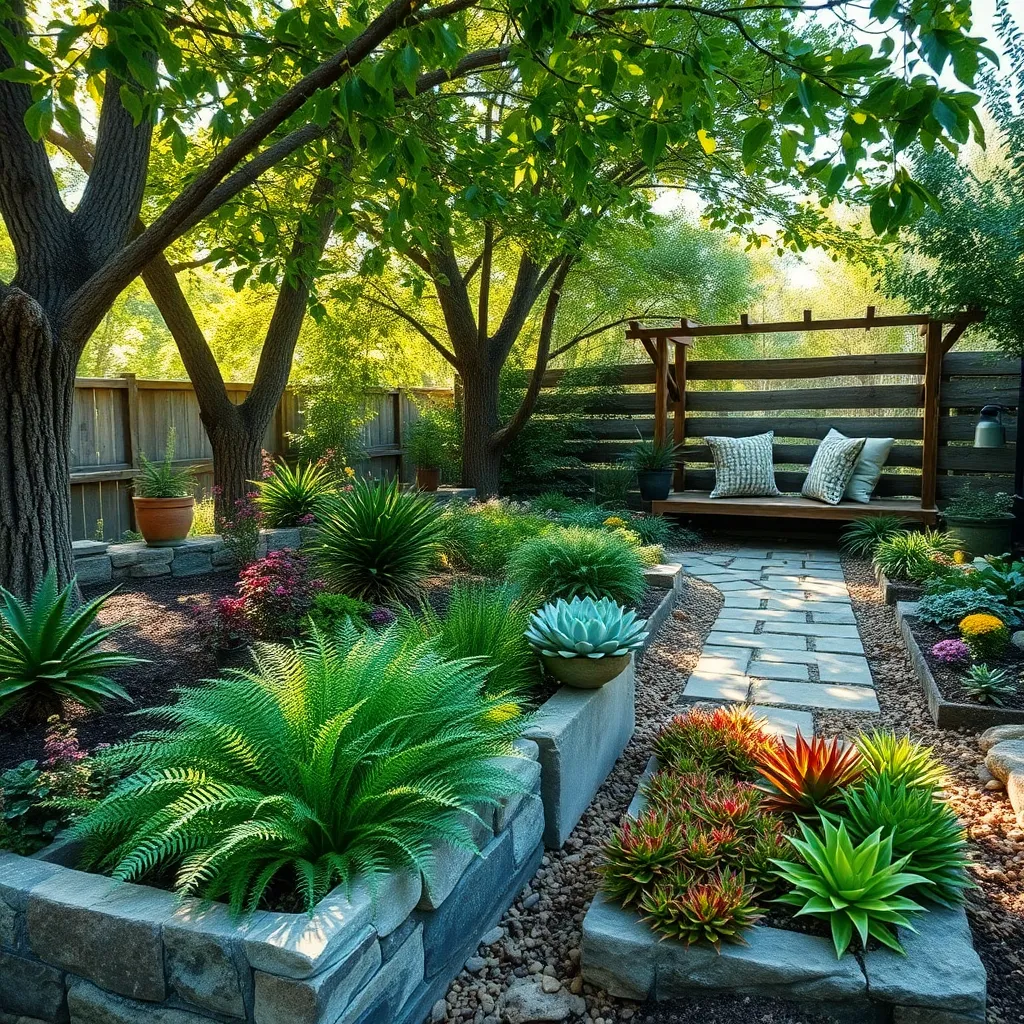
Creating shaded plant zones in your garden can significantly conserve water and protect your plants from extreme heat. Start by selecting plants that naturally thrive in shade, such as ferns, hostas, and astilbes, which require less water and provide lush greenery.
Incorporate structures like pergolas or strategically placed umbrellas to create artificial shade. This not only reduces water evaporation but also allows for the inclusion of more diverse plant species that prefer filtered light.
Consider using taller plants or trees as natural shade providers for smaller, water-sensitive plants. For example, plant drought-tolerant trees like the Desert Willow or Redbud to cast shade on more delicate flora beneath.
Mulching is essential in shaded zones to maintain soil moisture and suppress weed growth. Use organic mulches, such as bark chips or pine needles, which help keep the soil cool and reduce the need for frequent watering.
Utilize Reflective Garden Surfaces
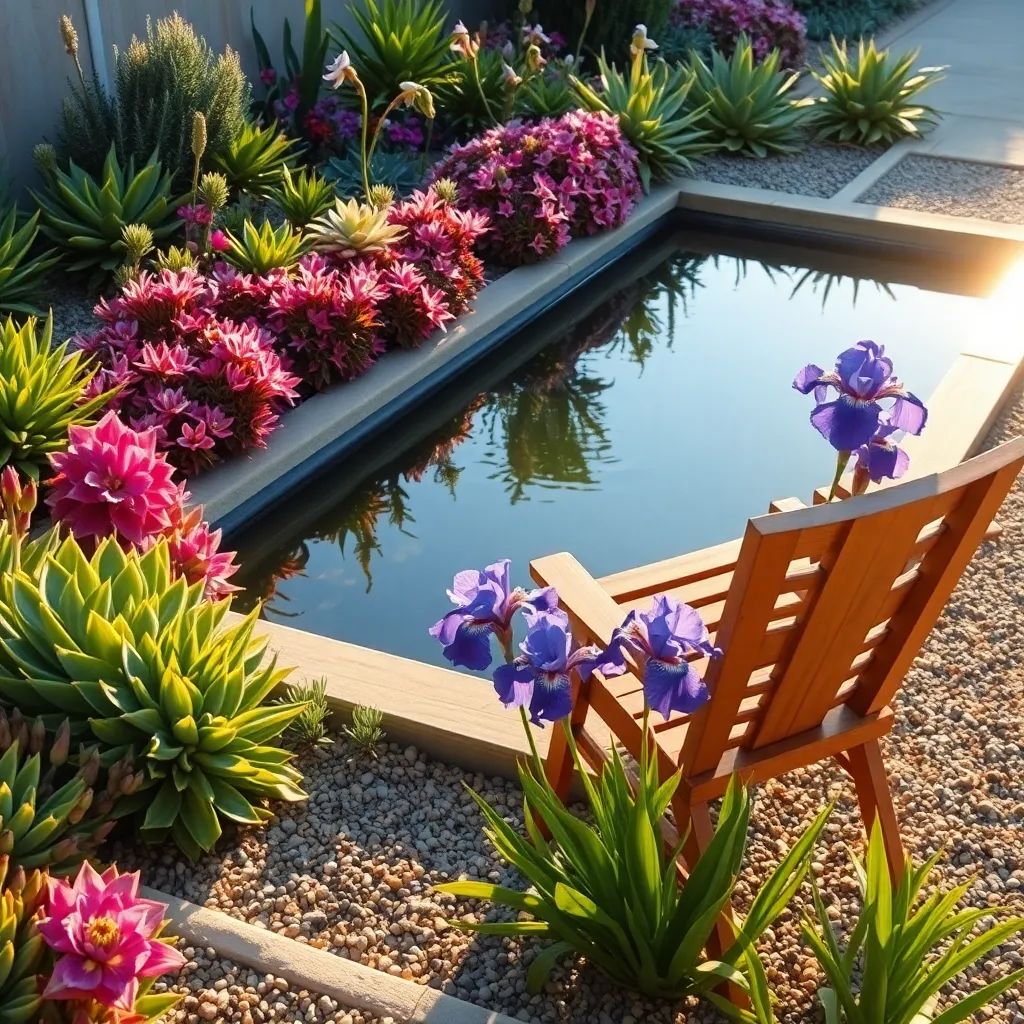
Incorporating reflective surfaces in your garden can significantly enhance light distribution, especially in shaded areas. Mirrors, aluminum foil, or even reflective mulch can redirect sunlight to areas that need more light, promoting healthier plant growth.
To start, place reflective materials strategically to bounce light onto your plants, especially those that thrive in bright conditions. This not only boosts the aesthetic appeal of your garden but also helps in conserving water since plants can photosynthesize more efficiently with increased light.
For beginners, using aluminum foil behind potted plants or along garden edges is a simple and effective method. More experienced gardeners might consider installing garden mirrors, which not only reflect light but also create the illusion of space, making small gardens feel larger.
It’s crucial to monitor plant responses to the increased light, as too much reflection can lead to overheating. Ensure your plants are not stressed by the extra light by adjusting the angle and distance of reflective surfaces as needed, especially during peak sunlight hours.
Mix Perennials for Seasonal Color

To achieve vibrant seasonal color with perennials, consider planting a mix of species that bloom at different times of the year. This approach ensures your garden is never without color, providing continuous interest and allure.
Start by selecting perennials that thrive in your climate, taking into account the amount of sunlight and type of soil available. For example, Lavender prefers well-drained soil and full sun, while Hostas flourish in shaded, moist environments.
Incorporate a variety of heights and textures to create depth and visual interest. Taller perennials like Delphiniums can serve as a backdrop, while shorter varieties such as Coreopsis provide a cheerful ground cover.
For water-saving benefits, choose drought-tolerant perennials that require less irrigation once established. Consider plants like Blanket Flower (Gaillardia) and Russian Sage, which are both hardy and colorful options for low-water gardens.
Opt for Colorful Drought-Resistant Shrubs

Adding colorful drought-resistant shrubs to your garden can significantly reduce water usage while maintaining visual appeal. These plants are ideal for areas with limited rainfall and can thrive in well-draining soil types such as sandy or loamy soil.
Consider planting shrubs like Lavender (Lavandula) or Russian Sage (Perovskia atriplicifolia), which are both hardy and vibrant. Lavender requires full sun and should be watered deeply but infrequently, allowing the soil to dry out between waterings.
For year-round color, choose California Lilac (Ceanothus), which blooms profusely in spring and tolerates drought conditions once established. It’s important to plant it in a spot with at least six hours of sunlight per day to ensure optimal growth and flowering.
Experienced gardeners might explore using mulch around the base of these shrubs to conserve moisture and reduce weeds. A layer of organic mulch, such as bark chips or straw, can also help moderate soil temperature and improve plant health.
Conclusion: Growing Success with These Plants
In “12 Colorful Water-Saving Garden Ideas,” we explored innovative ways to nurture not just your garden but also your relationships. We delved into the importance of communication, much like selecting the right plants, and how establishing boundaries is akin to creating a garden layout. We highlighted the role of trust, represented by the roots that support vibrant blooms, and the patience required to see your garden—and your relationships—flourish. We also touched on conflict resolution, akin to weeding, and the significance of shared goals as in planning a seasonal harvest. Each idea mirrors a key relationship concept, offering you a unique perspective on growth and sustainability.
Now, take a moment to identify one relationship in your life that could benefit from a little extra care. Apply one of these ideas today by initiating an open conversation or setting a shared goal. This article is a treasure trove of strategies—bookmark it as your go-to guide for nurturing your relationships.
As you cultivate these connections, remember that every small effort contributes to a thriving relationship landscape. Embrace this journey with optimism, for your dedication today lays the foundation for lasting success tomorrow. Save this article as a reminder that your relationship garden is ever-growing and worth every effort.







